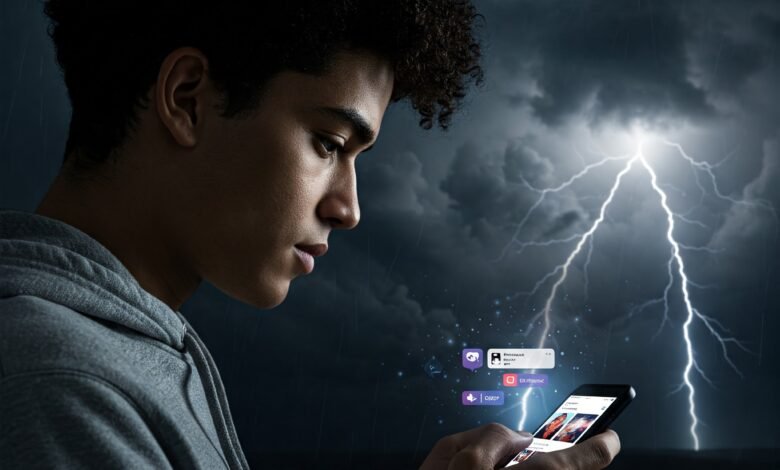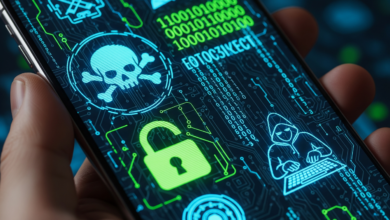How Social Media Affects Your Mental Health (And What to Do About It)

Introduction
In the digital age, social media has become a ubiquitous aspect of daily life, profoundly transforming how individuals communicate, connect, and interact with one another. Platforms such as Facebook, Twitter, Instagram, and Snapchat have revolutionized the way people share information, express emotions, and establish relationships. While these tools offer numerous opportunities for connection and self-expression, they also present challenges that warrant consideration, particularly concerning mental health.
The rise of social media has facilitated a new form of communication, allowing individuals to connect across geographic boundaries, share diverse perspectives, and access a wealth of information instantaneously. This evolution of communication has led to enriched relationships for many, fostering a sense of belonging and community. However, the pervasive nature of these platforms can also result in a number of adverse effects on mental well-being. Users may encounter cyberbullying, unrealistic portrayals of life, and the pressure to maintain a certain online image, which can lead to anxiety, depression, and lower self-esteem.
The Positive Effects of Social Media on Mental Health
Social media has become an integral part of modern life, enabling individuals to maintain connections with family and friends regardless of geographical barriers. One of the primary positive effects of social media on mental health is its ability to foster these connections. Platforms such as Facebook, Instagram, and Twitter allow users to share experiences, celebrate achievements, and provide support during difficult times. This connectivity can significantly reduce feelings of loneliness and isolation, which are commonly linked to mental health issues.
Moreover, social media serves as a powerful support network for individuals facing mental health challenges. Users can find communities that resonate with their experiences, enabling them to engage with others who understand their struggles. This sense of belonging can cultivate a feeling of acceptance and understanding, making individuals feel less alone. These online interactions can serve as a crucial lifeline, particularly for those who may be unable to seek support in-person due to various barriers, such as stigma or geographic isolation.
Furthermore, social media can provide valuable resources for mental health awareness and education. Many platforms host groups and pages dedicated to mental health advocacy, offering information on coping strategies, treatment options, and personal stories that can inspire hope. These resources can empower users to take charge of their mental health by encouraging them to seek help and fostering proactive discussions about emotional well-being. Activists and organizations often utilize social media as a tool for raising awareness and supporting research, ultimately contributing to a broader understanding of mental health issues in society.
In summary, while social media has its challenges, it also presents numerous benefits that can positively influence mental health. These platforms help in bridging gaps among friends and family, providing vital support networks, and fostering communities for individuals with shared experiences, thus playing an important role in enhancing overall well-being.
The Negative Effects of Social Media on Mental Health
Social media has become a pervasive aspect of modern life, impacting individuals’ mental health in numerous ways. One of the most significant adverse effects is the rise in anxiety levels among users. Research indicates that individuals who spend extensive periods on social media are more prone to experiencing anxiety. The constant barrage of notifications and the pressure to engage can lead to a state of hyper-vigilance, thereby exacerbating feelings of unease.
Additionally, depression has been closely linked to excessive social media use. A study conducted by the University of Pennsylvania found that limiting social media usage resulted in lower levels of depression and loneliness. This correlation may stem from the tendency for users to engage in social comparison, leading to feelings of inadequacy and hopelessness when their lives appear less exciting than those of their peers portrayed online.
Cyberbullying is another critical issue that has emerged with the rise of social media platforms. Victims of cyberbullying often suffer from profound psychological distress, which can result in long-term mental health problems such as depression, anxiety, and low self-esteem. The anonymity provided by social media can embolden individuals to engage in harmful behaviors that would be less likely to occur in face-to-face interactions, creating a toxic online environment.
The pressure to curate an idealized online persona further compounds these issues. Users often feel compelled to project a perfect image, leading to a disconnect between their online self and real-life experiences. This dissonance can result in increased stress and feelings of inadequacy, as individuals strive to maintain a facade that may not reflect their true selves.
In conclusion, while social media offers opportunities for connection and expression, its negative effects on mental health are profound and should not be overlooked. Understanding these impacts is essential for users to navigate their online experiences healthily and positively.
The Science Behind Social Media and Mental Health
Understanding the relationship between social media and mental health requires a look at the various scientific studies that explore this intricate connection. Research indicates that social media platforms can significantly impact brain chemistry, often triggering pathways similar to those involved in addiction. The ease of access to these platforms encourages habitual checking, which can lead to an increase in dopamine levels—a neurotransmitter associated with pleasure and reward. This rise in dopamine can create a cycle of reinforcement, prompting users to seek out validation through likes, comments, and shares, thereby reinforcing the behaviors commonly referred to as “social media addiction.”
Several studies have indicated that excessive social media use is correlated with symptoms of anxiety, depression, and loneliness. A prominent study published in “The American Journal of Psychiatry” highlighted that individuals who frequently utilize platforms such as Facebook, Instagram, and Twitter reported higher levels of anxiety and feelings of inadequacy. This phenomenon is often attributed to the effects of social comparison, where users evaluate their lives against the curated images and posts of others. Such comparisons can lead to negative self-perception and decreased overall satisfaction with life.
The emotional responses elicited by social media interactions are another focal point of research. Positive feedback, such as receiving likes or supportive comments, can temporarily boost mood and enhance self-esteem. Conversely, negative comments or cyberbullying can have detrimental effects, leading to feelings of distress and isolation. The complexity of social media’s impact on mental health lies in its dual nature: While it can provide support and connection, it also exposes individuals to risks that may exacerbate mental health issues.
In light of these findings, it is crucial to approach social media use thoughtfully, recognizing its potential effects on mental health while also being aware of the benefits it can offer in terms of social connectivity and community support. This balanced understanding can guide individuals in navigating their social media engagement in a healthier manner.
Recognizing the Signs of Social Media Strain
In today’s digital age, social media has become a significant aspect of our daily lives, but its impact on mental health can be profound. Recognizing the signs that social media is adversely affecting your mental well-being is the first step towards developing a healthier relationship with these platforms. Various symptoms can indicate social media strain, including increased anxiety levels. Users may find themselves frequently checking notifications or feeling a sense of urgency to respond to messages, which can lead to heightened stress and feelings of inadequacy.
Irritability is another common symptom associated with excessive social media use. When individuals are constantly exposed to curated content showcasing the best moments from others’ lives, they may develop feelings of jealousy or resentment, which can fuel irritability and negative emotions. This is particularly true when comparing oneself to peers, leading to a cycle of self-criticism and diminished self-esteem.
Furthermore, social withdrawal is a significant warning sign often overlooked. A person may increasingly prioritize online interactions over in-person ones, resulting in isolation and weakening real-life relationships. This addiction to digital communication can foster feelings of loneliness, despite being engaged with others online. The paradox of feeling disconnected from reality while being digitally connected is a crucial aspect of social media’s impact on mental health.
Maintaining awareness of these symptoms is essential for individuals seeking to cultivate a balanced approach to social media. Regular self-assessment can help identify when social media use becomes detrimental, empowering users to implement strategies to mitigate its adverse effects. By paying attention to anxiety levels, irritability, and tendencies towards social withdrawal, individuals are better equipped to take the necessary steps for improved mental health and well-being.
Practical Tips for Managing Social Media Use
As social media becomes increasingly integrated into daily life, establishing healthy boundaries around its use is crucial for mental well-being. One effective method for managing social media is setting clear time limits. Designating specific times for checking social media can prevent endless scrolling and promote more productive use of time. Many smartphones and apps now offer built-in features that allow users to set limits on how long they spend on social media each day, making it easier to stick to designated usage times.
Another important strategy is curating your online feeds. Following accounts that provide inspiration, motivation, and positive interactions is essential in promoting mental health. Conversely, unfollowing or muting accounts that trigger stress, negativity, or anxiety can significantly enhance one’s social media experience. Engaging positively within your online communities can contribute to a more enriching environment, where connections are formed that uplift rather than detract from mental health.
Additionally, engaging in digital detoxes can be an effective way to reset one’s relationship with social media. This can involve taking a complete break from all social media platforms for a predetermined period or limiting usage to only essential interactions. Such detox periods can provide significant clarity and relief, allowing for a reassessment of one’s digital habits and their impact on emotional well-being.
Lastly, practicing mindfulness when using social media is paramount. This entails being conscious of how certain content makes you feel and adjusting your usage accordingly. Engaging mindfully means interacting with posts and discussions that contribute positively to your mental health, while also recognizing when to disengage from interactions that may lead to emotional distress. By implementing these practical tips, individuals can take proactive steps towards a healthier social media experience, promoting mental wellness and positive interactions in digital spaces.
Alternative Ways to Connect and Engage
In an era where social media dominates communication, exploring alternative ways to connect and engage has become increasingly important for mental well-being. One effective approach lies in fostering connections through in-person gatherings. Organizing regular meetups with friends or family can offer invaluable opportunities for face-to-face interactions that strengthen emotional bonds. These meetings can occur in various settings, such as at home, in local parks, or at coffee shops, creating an atmosphere conducive to genuine conversation and connection.
Participating in community activities is another significant avenue for social engagement. Many local organizations and neighborhoods host events that encourage residents to come together. Engaging in volunteer work, organizing community clean-ups, or attending local fairs not only provide a sense of belonging but also contribute positively to mental health. Such initiatives promote interaction with individuals who share similar interests, thereby helping to build supportive relationships outside of digital platforms.
Moreover, joining interest-based clubs or groups can immensely enhance one’s social life. Whether it be a book club, a fitness class, or a cooking workshop, these settings encourage individuals to connect over common passions, fostering valuable friendships. These activities allow people to engage authentically, share experiences, and build rapport, all of which enhance emotional well-being.
Additionally, attempting to disconnect from screens periodically can yield refreshing perspectives on social interaction. Designating screen-free hours enables individuals to focus on mindfulness and engage with their immediate surroundings. Exploring hobbies or creative pursuits also serves as an alternative means to connect with oneself and others through shared interests, thereby enriching one’s social network.
In conclusion, increasingly relying on social media for interaction can have adverse effects on mental health. By consciously seeking alternative methods of connection—be it through in-person gatherings, community activities, or clubs—individuals can cultivate more fulfilling relationships that contribute positively to their overall mental well-being.
Seeking Professional Help
The increasing prevalence of social media in contemporary society has brought forth a myriad of implications, particularly regarding mental health. When individuals find themselves significantly affected by their social media interactions, seeking professional help becomes a crucial step. Understanding when to pursue therapy can often feel daunting; however, certain signs can indicate a need for support. Frequent feelings of anxiety, depression, or low self-esteem tied to social media use are key indicators that professional intervention might be beneficial.
Therapy provides a safe space for individuals to explore the emotional ramifications of social media. Discussing these issues with a trained professional can lead to a deeper understanding of personal feelings and behaviors, allowing individuals to develop effective coping strategies. Therapeutic sessions can assist individuals in reframing their perspectives on social media, ultimately mitigating its negative impacts. Moreover, therapists can help clients establish healthier social media boundaries, thus fostering a more positive online experience.
Locating suitable mental health resources is essential for obtaining the help needed. Individuals can start by consulting with their primary care providers, who can offer referrals to qualified mental health professionals. Additionally, many organizations and online platforms now offer directories for mental health services tailored specifically for social media-related concerns. It is imperative to consider therapists who specialize in issues surrounding digital addiction or online interactions. By engaging with qualified experts, individuals can confront their social media-related struggles more effectively, leading to improved mental health outcomes.
Ultimately, the path to emotional well-being in the context of social media involvement may require support from professionals. Seeking therapy not only offers assistance in navigating these challenges but also empowers individuals to regain control over their mental health.
Conclusion
In examining the multifaceted relationship between social media and mental health, it becomes evident that this digital landscape can serve both beneficial and detrimental roles. On one hand, social media platforms offer avenues for connection and support, allowing individuals to interact with family, friends, and communities regardless of geographical barriers. These connections are essential for fostering a sense of belonging and can significantly enhance one’s emotional well-being.
Conversely, the harmful potential of social media must not be overlooked. Issues such as cyberbullying, unrealistic comparisons, and the perpetuation of anxiety or depressive symptoms are prevalent in online interactions. While engaging with social media can be enjoyable, the alignment of self-worth with online validation poses serious risks to mental health. It is crucial for users to recognize these patterns and take proactive steps in managing their online presence and consumption.
Furthermore, a conscious approach to social media usage can mitigate its adverse effects. Practicing digital detoxes, setting clear boundaries around online engagement, and curating a positive feed can greatly enhance the experience. Users should actively reflect on their emotional responses to social media and seek to foster discussions around mental health within their circles, contributing to a more informed and supportive environment.
Ultimately, as the digital age continues to evolve, engaging in dialogues around mental health and social platforms will become even more critical. It is imperative for individuals to be mindful of their social media habits and understand its complexities in influencing mental health. Through awareness and resilience, we can navigate this intricate terrain while prioritizing our emotional well-being.






















